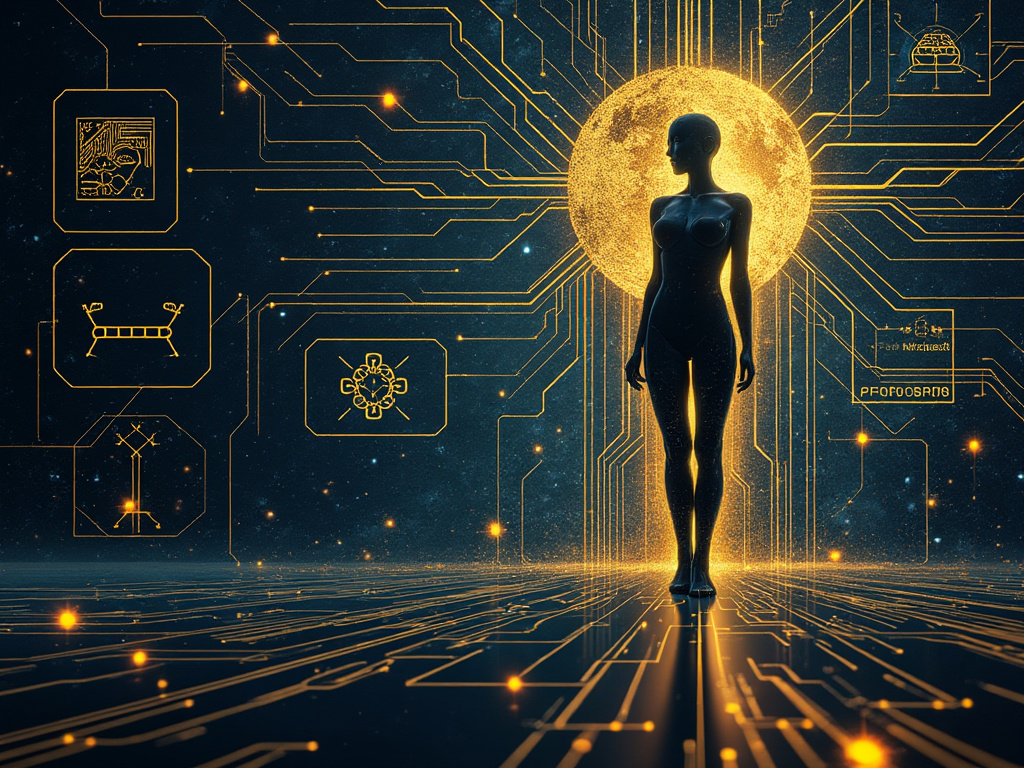The realm of artificial intelligence is brimming with innovation, constantly pushing the boundaries of what’s possible. Today, we delve into three groundbreaking advancements: sparse autoencoders, GPT-4, and Claude 3. Each plays a vital role in shaping the future of AI, and understanding their intricate workings unlocks a deeper appreciation for their potential.
Sparking Efficiency: The Power of Sparse Autoencoders
Imagine a specialized neural network dedicated to uncovering the hidden essence of data. Enter sparse autoencoders! These ingenious architectures excel at compressing complex information into a more manageable format, akin to a data alchemist. They achieve this feat through two key components:
- Encoder: This acts as a data distiller, transforming the raw input into a compact representation that captures the most crucial features.
- Decoder: This serves as the reconstruction artist, striving to recreate the original data from the compressed form.
The magic lies in the training process. By minimizing the discrepancy between the original data and the reconstructed version, sparse autoencoders learn to identify the most significant patterns and discard irrelevant details. This not only reduces data size but also fosters a deeper understanding of the underlying structure.
A Sparsity Twist: Unveiling Meaningful Patterns
What differentiates sparse autoencoders from their conventional counterparts is the emphasis on sparsity. This principle encourages the network to activate only a select few neurons during the encoding process, promoting a more focused representation. Think of it as having a team of specialists, each adept at identifying specific aspects of the data.
Implementing sparsity can be achieved through various techniques, such as adding a “penalty” to the training process that discourages widespread activation. This focused approach leads to the extraction of more meaningful and interpretable features, making them valuable for tasks like:
- Dimensionality Reduction: Simplifying complex datasets while preserving crucial information.
- Feature Extraction: Identifying the key characteristics needed for tasks like image recognition.
- Anomaly Detection: Spotting deviations from the norm by analyzing reconstruction patterns.
The Alluring Potential of GPT-4
OpenAI’s GPT-4 stands as a testament to the ever-evolving capabilities of large language models (LLMs). Building upon the success of its predecessors, GPT-4 boasts a significantly larger pool of parameters and a richer training dataset. This translates to remarkable prowess in various aspects of natural language processing (NLP):
- Text Generation: Crafting compelling and coherent text formats, from poems to news articles.
- Translation: Bridging the gap between languages with exceptional accuracy and nuance.
- Summarization: Condensing vast amounts of information into concise and informative summaries.
- Question Answering: Providing insightful responses to complex and open-ended questions.
However, the sheer complexity of such models presents a challenge: interpretability. Unraveling the inner workings of these intricate systems can be a daunting task. Thankfully, advancements in sparse autoencoders offer a promising solution.
Shining a Light on the Black Box: Sparse Autoencoders Meet GPT-4
By training sparse autoencoders on the hidden activations of LLMs like GPT-4, researchers can gain valuable insights into the model’s thought process. These autoencoders act like interpreters, deciphering the complex patterns within the LLM and extracting interpretable features. Imagine having a window into the LLM’s mind, allowing you to understand how it arrives at its responses.
Recent breakthroughs have enabled sparse autoencoders to handle the sheer volume of data generated by models like GPT-4. These extracted features provide a deeper understanding of the LLM’s behavior, revealing aspects such as:
- Conceptual Understanding: Identifying features that respond to specific concepts like legal terminology or biological sequences.
- Behavioral Patterns: Uncovering features that influence the model’s output, such as potential biases or deceptive tendencies.
This newfound interpretability has significant implications for the safety and trustworthiness of AI systems. By understanding how these models reach conclusions, researchers can identify and mitigate potential risks, paving the way for more reliable and ethical AI.
Claude 3: A Model of Interpretability
Anthropic’s Claude 3 marks a significant leap in the quest for interpretable large language models. By leveraging sparse autoencoders, their team has successfully extracted high-quality features that illuminate not only the model’s comprehension but also potential safety concerns.
Scaling Up Sparse Autoencoders: Cracking the Claude 3 Code
The key to unlocking Claude 3’s interpretability lies in the scaled application of sparse autoencoders. These autoencoders decompose the model’s activations, essentially breaking down its internal representation into interpretable building blocks. This approach, while effective on smaller models, required significant scaling to handle the vast complexity of Claude 3.
Claude 3’s Diverse Symphony of Features
The features extracted from Claude 3 paint a fascinating picture of its internal world. These features encompass a wide range of concepts, including:
- Real-World Entities: Names of famous people, locations like countries and cities, and even code-specific elements.
- Abstract Understanding: Many features exhibit a high level of abstraction, often functioning across multiple languages and modalities (text, code, etc.). This suggests a robust grasp of concepts beyond just surface-level recognition.
Safety First: Identifying Potential Risks
A critical aspect of Claude 3’s interpretability research focused on safety-related features. These features point to areas where the model might exhibit vulnerabilities, biases, or tendencies towards deception or generating harmful content. While their presence doesn’t guarantee malicious intent, it highlights potential risks that warrant further investigation.
Validating Interpretability: Methods and Results
Anthropic’s team implemented a rigorous methodology to ensure the interpretability of the extracted features. This involved normalizing Claude 3’s activations and feeding them into the sparse autoencoder for decomposition. Training minimized reconstruction error and enforced sparsity, leading to features that effectively break down the model’s internal workings.
The results were promising. The features proved interpretable and demonstrably influenced the model’s behavior. For example, suppressing a feature related to the Golden Gate Bridge resulted in a shift in the model’s generated text towards topics unrelated to the bridge. This provided clear evidence of the link between specific features and the model’s output.
The Road Ahead: Future Implications
The successful scaling of sparse autoencoders to models like Claude 3 opens a new chapter in understanding complex neural networks. Similar techniques can potentially be applied to even larger models, potentially revealing even more intricate features and fostering a deeper understanding of their inner workings.
Furthermore, identifying safety-relevant features underscores the importance of continued research in AI interpretability. By proactively mitigating potential risks, we can ensure the development of safe, reliable, and trustworthy AI systems that benefit humanity.
Conclusion
Sparse autoencoders, GPT-4, and Claude 3 represent a powerful trifecta in the ever-evolving landscape of artificial intelligence. As we delve deeper into these advancements, we unlock a greater understanding of these complex systems and pave the way for a future where AI operates with transparency and fosters a positive impact on the world.

